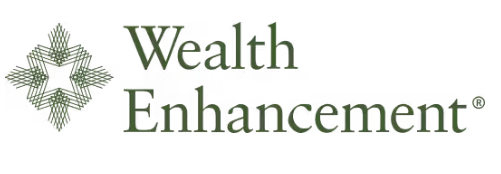- タウン情報
-
 銀行・金融・証券・保険
銀行・金融・証券・保険 - Wealth Enhancement Group/ウェルス・エンハンスメント・グループ
最終更新日 : 2025/02/12

Wealth Enhancement Group/ウェルス・エンハンスメント・グループ

安心出来るファイナンシャルプランでお手伝い致します。
私たちは個人及び法人のお客様にサービスを提供しております。
お気軽にご相談ください。
◆ファイナンシャル・プランニング
◆資産運用
◆個人及び企業の退職年金
◆生命保険、傷害保険、介護保険
高橋孝輔:
ファイナンシャルアドバイザー。MBA、CFP🄬、CRPC🄬、CPA🄬
インフォメーション
| 住所 | 1409 140th Pl. NE, Bellevue WA 98007 |
|---|---|
| 部屋番号 | #210 |
| 電話番号 | 425-736-4964 |
| ktakahashi@wealthenhancement.com | |
| Webサイト | https://www.wealthenhancement.com/s/meet-our-team/bio/kosuke-takahashi-MCC6O3U5OHAJEVFK4X5N4ALKJMYY |
「お金の悩み特集」:2024年、2022年に記事が掲載されました
【 2024年、ライトハウスの「お金の悩み特集」に記事が掲載されました 】
退職後の資産運用、どんな方法がありますか?
A:債券、株式、証券、年金、それぞれ長短所の理解を。退職後、どこで過ごすかも重要な判断材料です。
老後の生活に向けて資産を蓄えることは投資の重要な目的の一つです。年々物価が上昇する中、皆さんも効率的に資産を増やすために401(k)やIRA、Roth IRAなどを積極的にご利用されていると思います。この誌面では蓄えた資産を退職後にどのように運用すべきかについてご紹介致します。
➡ 続きは以下のリンクでお読みください 。
【 2022年、ライトハウスの「お金の悩み特集」に記事が掲載されました 】
投資を始めたいけど、何を組み合わせるべき?
A: 投資の留意点は大きく四つ、リスクと分散投資、投資資産の種類、税務、最近の動向です。
リスクと分散投資
投資にリスクは付き物です。資産によってリスクは異なり、戦争、金利とマクロ経済、政治など制御の難しいリスクから一般企業の業績や特定の不動産などの個別リスクまでさまざまです。…..
➡ 続きは以下のリンクでお読みください 。
プロが解決!お金の悩み 2022 〜 アメリカでの不動産、投資、税金、資金計画
「お金の悩み特集」:2020年、2018年に記事が掲載されました
【 2020年、ライトハウスの「お金の悩み特集」に記事が掲載されました 】
老後資金、何が必要?
アメリカでの退職後の生活を計画するにあたり見落とされがちなのが介護費用です。日本では最大9割まで国の介護保険制度が負担してくれますが、アメリカでは基本的に全て自己負担となります。介護(Long-Term Care)サービスは….
➡ 続きは以下のリンクでお読みください 。
Lighthouse Seattle & Portland : July 2020 (us-lighthouse.com)
【 2018年、ライトハウスの「お金の悩み特集」に記事が掲載されました 】
子どもの学費が心配。今からどんな貯蓄ができる?
A: 529プランとGETプランを用いた貯蓄方法があります
大学生の学費と必要経費、10年後には年間 57,000ドル?
子どもの大学教育費は、自動車や家の購入同様に、時世における高額は出費の1つです。2017~18年度における全米の州立大学の1年間の授業料の平均は….
➡ 続きは以下のリンクでお読みください
Market Summary - December 2024
Dear Valued Clients and Friends,
Time flies and another year is close to an end. I hope you had a wonderful Christmas and are getting ready for a new year. Looking back, the world was filled with news about wars, and we had political uncertainties associated with the US presidential election. Inflation and the monetary policy by FED were the major topics this year. Nonetheless, we saw steady growth in its economy and the stock market recorded another positive performance. Real GDP grew 1.6% in Q1, 3.0% in Q2, and 3.1% in Q3 on a seasonally adjusted annualized rate. Atlanta FED expects 3.1% for Q4 as of December 24th. At the beginning of the year, CPI (consumer price index) creeped up from 3.0% in June 2023 to 3.5% in March 2024 and inflation concern was rekindled. But it came down to 2.4% in September and, after more than 1 year interval, FED (Federal Reserve Board) had a major shift of its policy stance from tightening (fighting against inflation) to loosening (supporting economy and labor market) in its September FOMC meeting by cutting its FF (Fed Fund) target rate by 0.5% and lowered it two more times (0.25% each) in the following months to the 4.25% to 4.50% range from the 5.25% to 5.50% range, with total 1.0% reduction. The S&P 500 index went up by 28.6% this year as of December 13th on a total return basis. It bounced up with momentum after it surpassed the earlier historical high 2 years ago (about 4800 in January 2022) in January. Among its 11 industrial sectors, 6 of them rose more than 20%. The top performing sectors were Communication Services and Information Technology, and the two lowest performers were Health Care and Materials. Generative AI was one of the key drivers of the market. The index was down by 18.1% in 2022 and up by 26.3% in 2023. The international stock market was more muted. MSCI EAFE index (large and mid-cap companies in developed countries except US and Canada) was up 6.93% this year as of December 13th vs 18.85% in 2023. The US bond market was quite volatile this year. The 10 year treasury yield started with 3.94% in January, went up to 4.68% in April, down to 3.62% in September and up again to 4.63% as of December 27th. Meanwhile, the 3-month treasury bill yield came down steadily from 5.38% in January to 4.29% as of December 27th in parallel manner with the FF rate. Yet, the market has a more conservative view about inflation and FED policy. According to the 3-month SOFR future at CME (Chicago Mercantile Exchange), it assumes that FED will cut its FF rate only by another 0.25% for the next 3 years. The USD yield curve turned out to be inversed (a short-term rate is higher than a long-term rate) in early 2022 and it continued be inversed in 2023 and 2024, which is one of the major leading indicators of recession. In May 2023, the 3-month treasury yield was higher than 10-year treasury yield by about 1.80%. But it finally returned to a normal positive yield curve this December without recession but with steady economic growth. I would say this might be a rare exception in the US economic history and attributed to FED’s diligence and its thoughtful policy decisions.
According to the FED’s latest economic projection released on December 18th, they expect the US economy to grow at a slower pace with moderate inflation. They project that annual real GDP growth will be 2.5% in 2024, 2.1% in 2025, and 2.0% in 2026. Meanwhile, PCE (personal consumption expenditure) inflation will be 2.4% in 2024, 2.5% in 2025, and 2.2% in 2026, and 2.0% in 2027. The latest PCE inflation in November was 2.4%. These figures were slightly more conservative than the forecasts in their projection in September. The major change was their projection of future FF rate. In September, they expected FF rate to be lowered to 3.4% at the end of 2025 and 2.9% in 2026 but, this time, their projection is 3.9% in 2025 and 3.4% in 2026. According to Chair Powell at the press conference after the December meeting, he acknowledged the US economy is strong and in good condition and inflation is at a steady pace to come down to its target rate of 2%, yet inflation risk is higher than previously expected. He thinks the current FF rate is close to neutral but still restrictive to the economy and further rate cuts are justified, but not as much as expected before. He also has raised concern about the labor market, which is weaker than pre-Covid time now and is still cooling. They expect the unemployment rate will creep up from the current 4.2% in November to 4.3% and stay at the level in the following few years, which is still considered to be healthy condition.
As for the latest economic indices, the employment report for November shows 227,000 new job (nonfarm payrolls) creation up from 36,000 for October, which was negatively impacted by hurricanes and Boeing strike, but the average of the two-month figures was still lower than the monthly average of 191,000 from January to September and 251,000 in 2023. November ISM manufacturing and non-manufacturing indices (leading economic indicators) were 48.4 and 52.1 vs 46.5 and 56 in October (over 50 is expansion and less than 50 is contraction), showing that the manufacturing sector continues to struggle. On the other hand, consumer demand continues to be strong. Retail Sales in November were up 3.8% yoy (year over year) after 3.9% up in October, showing good holiday sale result. If we assume 3.0% yoy growth in December, the annual growth rate of Retail Sales I 2024 would be 2.8% vs 3.6% in 2023 and 9.1% in 2022, showing more moderation of growth and in line with the FED’s GDP projection. Personal consumption expenditures in November were up 5.5% and personal income was up 5.3% vs 5.4% and 5.3% in October respectively, showing retail consumption and income is growing faster than inflation rate.
What kind of year will 2025 be? There are many uncertainties related to Trump administration and its domestic and foreign policies. Lower taxes and deregulation would positively affect corporate earnings and consumer spending, but tighter immigration policy and higher tariffs would cause more inflationary pressure and force FED to have difficult options. According to FactSet and its report on December 20th, market analysts expect 14.8% earnings growth for S&P 500 companies in 2025 vs 8.0% 10-year average (2014 – 2023). They also expect significant improvements in the sectors which underperformed in 2024 like health care, industrial, and materials. The 12-month forward P/E is 22.2 as of November 30th according to JPMorgan Asset Management and it is much higher than a 30-year average of 16.8. However, the compositions of S&P 500 have been changed toward more high-tech companies with higher earning margins and a higher P/E might be justified to some extent. The stock index has grown at about 11% per year since January 2009 to January 2024 with some ups and downs and the last 2-year bull trend might need some breather, yet I expect a positive year in 2025.
As you may be aware of by now, Capstone will merge into Wealth Enhancement Group effectively at the end of January 2025. With more resources, I look forward to serving you with an enhanced level of services in coming years.
Wishing you a wonderful New Year!
Kos
Note: US stock index and US treasury return data were provided by First Trust and Wall Street Journal. S&P 500 P/E ratios were provided JPMorgan Asset Management. The PCE deflator was provided by the Bureau of Economic Analysis. CPI and PPI data and non-farm payrolls numbers and other labor statistics were based on the US Bureau of Labor Statistics. US retail sales data was provided by the Census Bureau. The ISM service and manufacturing indices were provided by the Institute for Supply Management.
Kosuke (Kos) Takahashi, MBA, CFP®, CRPC®, CPA
